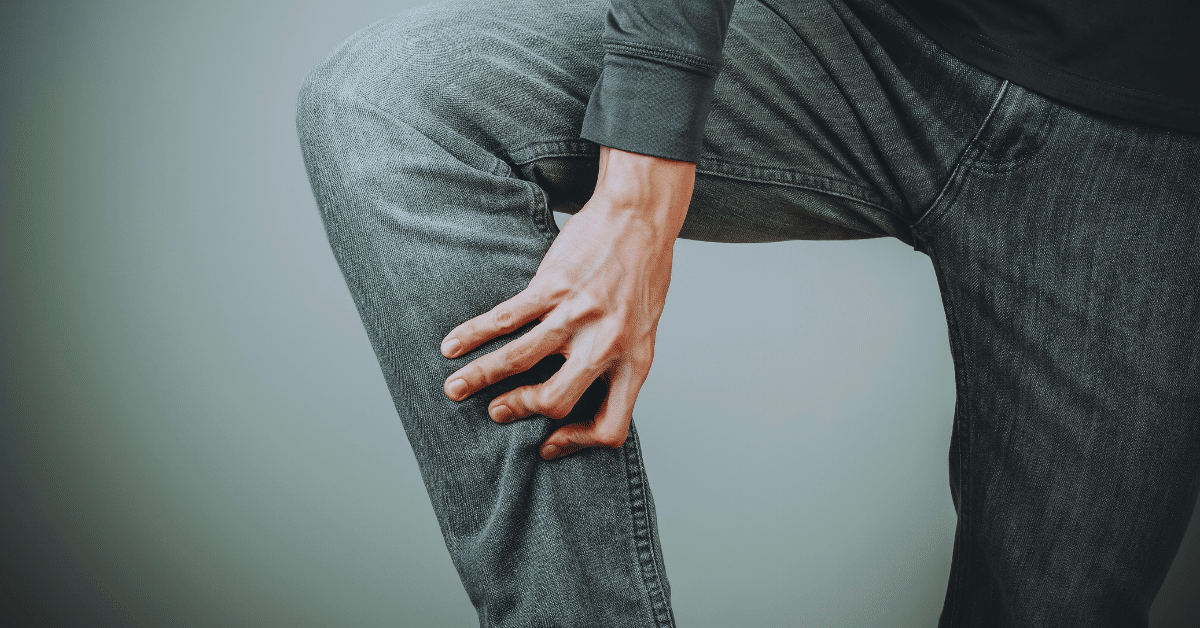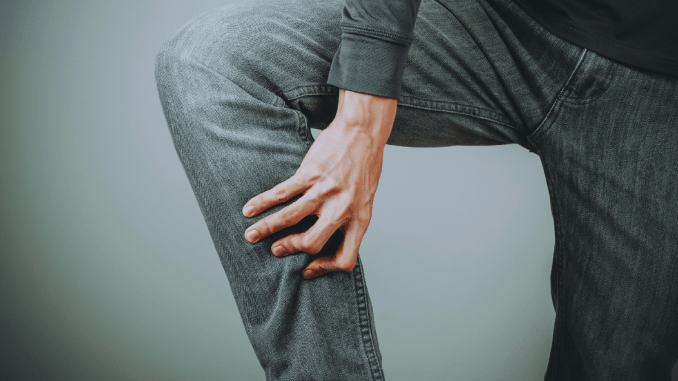

Today, we will look at how you can improve leg circulation through simple exercises that anyone can do at home. Good leg circulation is vital for overall health, as it helps deliver oxygen and nutrients to your muscles while removing waste products, ultimately reducing the risk of conditions like varicose veins and deep vein thrombosis.
To address this important aspect of health, we will outline six easy exercises that require no equipment, making them accessible for everyone, regardless of fitness level. These carefully selected exercises not only enhance blood flow but also promote flexibility and strength in your legs. By incorporating these beneficial movements into your daily routine, you can significantly improve your leg health and overall well-being. Join us as we share these effective exercises that can easily fit into your lifestyle, ensuring you stay active and healthy.
6 Easiest Exercises To Instantly Improve Leg Circulation
Now, let’s begin with our sixth exercise: “Calf Raises”.
To perform calf raises effectively, start by standing with your feet shoulder-width apart. Slowly raise your heels off the ground, lifting your body onto the balls of your feet. As you do this, focus on feeling the stretch and activation in your calf muscles. It’s important to perform this movement gradually, aiming for 10 to 15 repetitions, allowing yourself to really engage those muscles with each lift.
With every calf pump, you can expect an increase in blood flow, which is essential for delivering nutrients and oxygen to the area. This enhanced circulation not only strengthens your calves but also contributes to overall leg health. Remember to maintain good posture throughout the exercise, keeping your core engaged and your shoulders relaxed for the best results.
Your calf muscles play a crucial role as the “second heart” of your circulatory system. This is because they assist your heart in circulating blood from the lower extremities back to the heart, working against gravity to push blood upward. By contracting and relaxing, these muscles help pump deoxygenated blood through the veins, playing a vital role in the body’s venous return system. This action prevents blood from pooling in the legs, which, if left unchecked, can lead to swelling, pain, and potentially more serious conditions like varicose veins or deep vein thrombosis.
For our fifth exercise, let’s progress to “Squats”.
Squats are an effective progression from knee bends, specifically designed to enhance lower limb strength. To perform squats safely, start by standing with your feet shoulder-width apart, toes slightly pointed outward. As you lower your body, imagine you’re sitting back into a chair, pushing your hips back while keeping your chest up and back straight. This correct posture is crucial not only for preventing injury but also for maximizing the exercise’s benefits.
Squats are a powerhouse movement, simultaneously building strength in your quadriceps, hamstrings, and glutes while improving lower limb flexibility – a key component of overall mobility. If you find balancing challenging at first, don’t hesitate to use a sturdy chair or wall for support; proper form takes precedence over depth. By consistently incorporating squats into your routine, you’ll notice significant improvements in both your lower body strength and stability, contributing to better functional fitness in your daily life.
For our fourth exercise, we’ll focus on “Leg Curls”.
Leg curls are an excellent exercise for enhancing hamstring and calf coordination, complementing the other exercises we’ve discussed. To perform this movement safely, begin by lying face down on a mat or using a leg curl machine if available. Ensure your body is properly aligned, with your legs extended straight behind you. If you’re using a machine, take a moment to adjust the pad so it rests comfortably against your lower legs. As you initiate the curl, bringing your legs upward towards your glutes, focus on engaging your hamstrings while maintaining a tight core.
For beginners especially, it’s crucial to have supervision to ensure proper form and prevent injury. Start with a manageable number of repetitions, gradually increasing as you build both strength and confidence. As you progress, consider incorporating light weights to enhance the challenge over time. By taking a slow, steady approach to this exercise, you’ll effectively improve your coordination and strength while minimizing the risk of strain, ultimately contributing to better overall leg function and stability.
Our third exercise focuses on the importance of “Stretching”.
After completing your exercises, it’s crucial to incorporate stretching into your routine to prevent blood stagnation and promote recovery. This practice not only helps maintain flexibility but also encourages blood flow, which is vital for muscle health. To effectively target your quadriceps, begin by standing on one leg. Then, grab your opposite ankle and gently pull it towards your glutes while keeping your knees together, holding this position for 15 to 30 seconds.
Next, focus on your calf muscles by finding a wall for support. Step one foot back, pressing your heel into the ground while bending your front knee, and maintain this stretch for the same duration. By consistently integrating these stretches into your post-exercise routine, you’ll not only enhance your flexibility but also reduce the risk of injury and muscle soreness. This regular stretching practice contributes significantly to overall muscle health, ensuring you stay active and pain-free in your daily activities.
Next, let’s continue with our second exercise: “Ankle Pumps”.
Let’s now turn our attention to ankle pumps, a simple yet effective exercise for improving leg circulation. This versatile movement can be performed while seated, making it accessible and easy for everyone, and is particularly beneficial for elderly individuals or those with limited mobility.
To begin, sit comfortably in a chair with your feet flat on the floor. Slowly lift your toes while keeping your heels grounded, then lower your toes back down and lift your heels, creating a rhythmic pumping motion. As you perform this exercise, aim for 10 to 15 repetitions for each leg, focusing on engaging your calf muscles with each movement.
This gentle action not only promotes blood flow but also helps prevent stiffness in your lower legs. By incorporating ankle pumps into your daily routine, you can significantly enhance circulation in your legs, contributing to overall leg health and well-being. The beauty of this exercise lies in its simplicity and effectiveness, making it an excellent choice for maintaining leg health throughout the day, even during periods of prolonged sitting.
And finally, our first and most essential exercise is “Walking”.
Walking is a fundamental exercise that helps improve circulation and overall health. To reap its full benefits, you should aim for at least 30 minutes of walking five times a week. This simple yet effective activity not only enhances blood flow but also contributes significantly to cardiovascular fitness. By walking regularly, you can strengthen your heart, lower blood pressure, and improve cholesterol levels, making it an essential component of a healthy lifestyle.
To maximize these benefits, it’s important to maintain a brisk pace during your walks, as this elevates your heart rate and boosts circulation even further. Whether you choose to walk outdoors or on a treadmill, consistency is key to seeing results. By incorporating walking into your daily routine, you’ll not only improve your circulation but also enhance your overall fitness and well-being, paving the way for a healthier, more active life.
In summary, we’ve explored several key exercises that significantly enhance leg circulation, each playing a vital role in promoting blood flow, strengthening muscles, and improving overall leg health. From calf raises and knee bends to squats, ankle pumps, and leg curls, these movements work together to create a comprehensive routine for optimal leg fitness.
By incorporating these exercises into your daily life, you’re not only maintaining healthy circulation but also preventing potential health issues. We encourage you to make these exercises a regular part of your lifestyle for lasting benefits.
.png)









 English (US)
English (US)